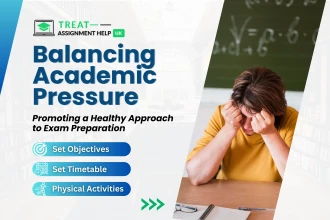Technology advancement and innovations or trends have shaped education and its future. Education is a sector that uses advanced technologies and strategies to make learning affordable and accessible for students. Technology allows better collaboration and coordination between students and teachers and also provides them with a way for better interaction and communication.
It also generates a learning environment and boosts creativity. Technology is transforming or bringing changes in the way in which we deliver and access technology. Here, we explore some innovations and trends in which new and advanced technology can transform education.
Why is it Important to Transform Education?
The use of technology can transform education and learning by expanding or providing experiences of personalized learning, access to required information, fostering collaboration, facilitating connectivity, streamlining processes of assessment, and enhancing interactivity.
Transforming education is empowering learners or students with skills, attitudes, values, and knowledge to be adaptable, prepared, and accessible for the future and contributing to planetary well-being and human as well as sustainable development. It is important to transform education as it helps to create experiences for students that are resulted in equitable and dramatic increases in educational value and outcomes.
How Technology Brings Changes in Education?
- Online learning: The use of technology has increased the use of massive open courses and platforms of online learning that allow all students to gain access to courses and educational materials remotely. It also enables students and provides flexibility to enhance and learn new things on their own. It helps students to acquire knowledge and new skills without depending on the classroom.
Also Read- The Future of Online Learning
- Access to knowledge and information: With the use of the internet, it is easy for students to access information in a wide amount. Students can easily access databases, educational websites, and online libraries to gather information, conduct research, and increase their deep understanding of their favorite subjects. Accessing information easily through these resources helps to expand various learning opportunities for students.
- Personalized learning: The experience of personalized learning is enabled by using technology that helps to meet the needs, learning styles, and interests of students. Adaptive platforms of learning use some algorithms for analyzing the performance of students, as well as provide customized activities and content for addressing improvement areas. This approach helps to promote comprehension, subject mastering, and better engagement.
- Communication and collaboration: Technology provides better communication and collaboration facilities among educators and students. Video conferencing, discussion boards, and online platforms are some tools that help students easily collaborate on projects, engage in discussion, and share ideas. Teachers provide support and feedback to their students effectively and foster interactive and collaborative learning environments.
- Cultural exchange and global learning: Through the help of technology, students can connect, and foster global awareness as well as cultural exchange. Online platforms and video conferencing help students to enhance their learning regarding different cultures, develop cross-cultural environments, and share perspectives.
Trends and Innovations
- Machine learning and artificial intelligence: These technologies are integrated into platforms and tools of education to provide and enhance personalized experiences of learning. Algorithms based on AI help to analyze data of students, provide adaptive recommendations and content tailored to the learning needs of individuals, and track progress. It also enables efficient feedback, assessment, and support to make decisions for educators.
- Gamification: This trend integrates game mechanics and elements into educational learning and experiences. It also leverages game engagement and inherent motivation to make education and learning interactive and enjoyable. Badges, rewards, points, and leaderboards are mainly used to incentivize achievement and progress, fostering competition and achievement among all students.
- Learning Analytics and data analytics: This trend utilizes data of students to gain valuable insights into patterns of learning, and personalized instruction, and identify all improvement areas. Educators can able to track and monitor the progress of students, tailor intervention that depends on an analysis of data, and assess performance. This helps to optimize strategies of teaching, enhance or improve educational-based outcomes, and identify all risks for students.
- Virtual reality and augmented reality: These technologies offer interactive and immersive experiences of learning and teaching. They can also help to simulate complex concepts, real-world environments, or any historical events, that allow all students to interact and explore various virtual scenarios and objects. VR and AR enhance understanding, engagement, and visualization of various abstract-based concepts.
- Blended and online learning: Platforms used for online learning and models of blended learning are becoming prevalent increasingly. Digital resources and online courses provide accessibility, opportunities for personalized learning, and flexibility. Here, blended learning consists of a combination of in-person and online instructions, and allow face-to-face meeting or interactions with peers and teachers.
- Blockchain: This is another trend or technology that enhances the authentication and verification of all educational-related credentials. It also enables tamper-proof and secure digital records related to achievement, qualifications, and certification as well as eliminates all needs for paper-based transcripts. Systems using blockchain can enhance the portability, trust, and transparency of educational-related sensitive information or credentials.
- Mobile learning: This innovation provides access to collaboration tools, interactive information or content on tablets, and smartphones, and educational resources. Mobile apps and devices enable education and learning anywhere and anytime in the world. It also provides various opportunities and personalized experiences of learning that fulfill the preferences and needs of each individual.
Conclusion
Education is transforming by embracing innovations and technology that can help to improve learning experiences and teaching. By addressing all issues as well as leveraging advantages gained from using new technology, educators can easily create engaging, equitable, and dynamic learning environments and cultures for students.
The above-mentioned innovations and trends are reshaping education and how we learn and teach, and making education engaging, accessible and personalized for all students.








